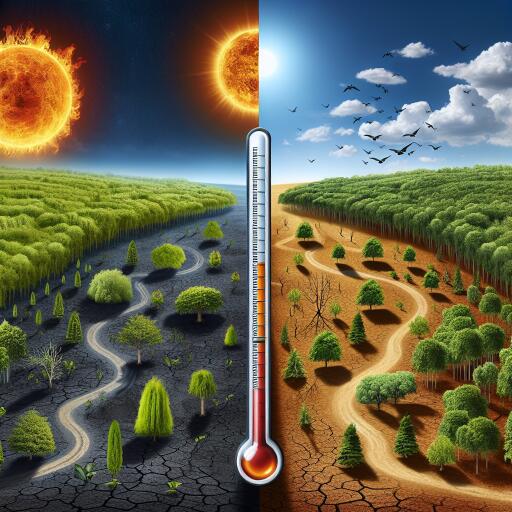
Restoring Tree Cover: A Complex Equation in the Battle Against Global Warming
The global push towards reforestation has often been heralded as a silver bullet in the fight against an array of environmental challenges, including pollution, biodiversity loss, and, most notably, climate change. Yet, recent scientific discourse has introduced a nuanced understanding that challenges this one-size-fits-all approach. The matter at hand is not just about planting trees but engaging in this practice wisely and judiciously to truly benefit the planet.
While the ecological services provided by trees are undeniably critical, indiscriminate reforestation can tether on the edge of causing more environmental detriment than good. Plantations with inappropriate tree species have led to the destruction of native plants, disturbed wildlife, and even exacerbated water scarcity in some regions. Additionally, the environmental integrity and social consequences of certain large-scale reforestation campaigns have come under significant scrutiny.
This critique extends to initiatives such as the plan to compensate for the massive tree loss in tropical regions by replanting in ecologically disparate locations, far removed from the original sites. Such strategies have raised concerns among environmental circles, highlighting the intricate balance between development and ecological preservation.
Immersing into this complex terrain, recent research published in Nature Communications has illuminated the intricate relationship between tree cover restoration and global warming. The study points out an often-overlooked factor in the reforestation dialogue: the albedo effect, which refers to the Earth’s ability to reflect sunlight. Surprisingly, increasing tree cover in certain landscapes, particularly plains or grasslands, can lower the albedo and potentially induce warming rather than cooling. This revelation underscores the necessity of integrating albedo considerations into reforestation assessments to accurately gauge their climate impact.
Through detailed mapping and analysis, the research delineates areas where reforestation could yield climatic benefits versus locations where it might inadvertently contribute to warming. The findings emphasize the importance of context-specific restoration practices, suggesting that places with high humidity and tropical forests are favorable for carbon capture without negating effects due to albedo changes.
Discussions around reforestation often oscillate between its potential benefits and drawbacks. While trees offer numerous ecological advantages, including air and water purification, biodiversity support, and localized cooling effects, they are not universally suited to every environment. For instance, planting trees in historically grassy or arid locales might harm local biodiversity or worsen water scarcity, respectively. It becomes evident that the mantra for effective reforestation hinges on selecting appropriate species and locales, thereby optimizing both ecological and climate outcomes.
The discourse further elaborates on the comparative analysis of reforestation against other climate solutions, advocating for a multifaceted approach to tackle climate change. While reducing fossil fuel emissions stands out as a paramount strategy, the necessity for additional carbon removal from the atmosphere is inevitable. Here, reforestation is spotlighted as a viable, cost-effective method for carbon sequestration, mandating a careful and informed application.
Specifically focusing on India, the research unravels the complex layers of climate positive and negative locales within the country, highlighting the critical role of strategic planning and execution in reforestation endeavors. The availability of comprehensive maps serves as a valuable tool for policymakers and project developers, guiding them towards maximizing climate mitigation benefits by considering both carbon storage and albedo changes.
In reflection, the journey of reforestation over the past decade, with an eye on India’s efforts, prompts a broader conversation about the methodologies and motivations driving current environmental policy and action. The goal remains clear: to advance reforestation strategies that are not only well-intended but are scientifically grounded and ecologically harmonious, ensuring that the greening efforts of today genuinely contribute to the sustainable and climate-resilient world of tomorrow.





Leave a Reply